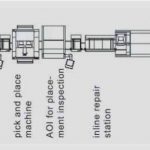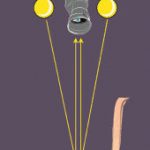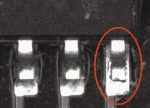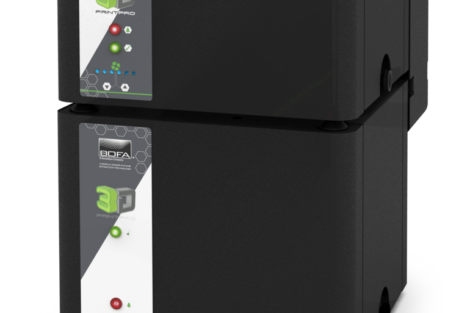In board assembly, there is a clear trend towards outsourcing the production process. Especially small and medium-sized companies, having specialized in a particular technology, have to struggle hard in the EMS (electronics manufacturing service) market. Strong competition or high cost pressures forces both the smaller OEM and EMS businesses to perform with high flexibility, due to product diversity as a precondition for successful operation. Here, high mix/low volume manufacturing is predominantly an environment that puts high requirements on the test strategy.
Jens Kokott, Goepel Electronics
Primarily, a manufacturing process with high yield, optimally aligned to the requirements of high mix/low volume, has a crucial stake in respect to competitiveness. However, how does a company reach that objective of effective product-quality verification with the anticipated use of an AOI system and affordable investments in the equipment for the entire production and test process chain? The production process with a very short quality-control loop, delivering results of the current manufacturing run immediately, is a very effective approach. Especially because it reduces the number of board assemblies in the rework/test circle for fixing manufacturing defects, and at the same time increases the yield of each production step. Compared to the end-of-line test with a single AOI system or the commonly used manual visual inspection (figure 1), the verification of the solder paste print, component placement (including type and polarity) by AOI technology plus in-circuit and functional tests are without doubt interesting solutions.
Using this latter concept combined with the stabilization of production parameters, a negligible number of faults remain whose recognition and rectification are in no relation to the detection costs required. This strategy is also going to be interesting for higher product diversity at smaller numbers of items because of the reduced repair costs and the lower effort at the programming stage, both reasoned in this concept.
But how about companies which cannot afford such a production and test strategy? Such an investment often involves reduced resources in respect to production planning and controlling. Thus, the test at the end of the production remains the only alternative. Due to the strategy applied, a combination of AOI, in-circuit and functional tests seems useful. But this however is not financially justifiable for every company, since even at a high product mix with a smaller quantity the ICT-fixturing costs are far too high. The only remaining alternative is the use of an AOI system for the quality check after the last production step (see figure 2). If only such an AOI system is used, an uncomplicated handling and optimal fault coverage are the preconditions.
Choice of an AOI system
When choosing a suitable AOI system for this task, the prospective user is facing a multitude of suppliers and their equipment which, in addition, don’t often have directly comparable features and terms. Or they will eventually find out the practicability and usefulness of a system and its machine concept after working with it over a longer time. Therefore, the choice of the performance level – better characterized as the price range – is a difficult task.
With the idea that to achieve a maximal fault coverage rate, the use of several cameras and light sources is often put forward. However, what means such a vast number of possible variations and parameters due to the effort of the test program creation? Especially the already often quoted high mix/low volume-refrain comes along with a limited time period for the creation of a test program, accompanied with high pressure for time to manufacture and market issues for the user.
Highly effective solder-joint inspection
With only two cameras but using an optimal configuration of camera, optics and lighting, Goepel offers a system series (see figure 3) with the capability for solder joint inspection on all kind of SMDs, ICs and THT (thru-hole technology) connections, as well as the general inspection tasks such as presence, positioning and polarity of the placed components themselves. This concept is based on the following conditions: the light source is situated very tightly around the camera. With presence of a soldering meniscus, the incident light is reflected in different directions and affects dark areas. On the contrary, a total reflection indicates, for example, a missing meniscus or lifted leads (see examples in figures 4 and 5).
In terms of software, after the exact recognition of an IC-pin, the proportion of the total reflection in the inspected areas is set and, in turn, a statement about the quality of the solder connection is made. An extensive library which can be expanded very comfortably by users, is available for various IC types.
Preconditions for optimal object imaging
This inspection process proves that the number of cameras and light sources is not primarily decisive for optimal fault coverage due to solder joint inspection. However, it is necessary that some essential preconditions are taken into account.
In as much as the total reflection level depends very much on the lighting intensity, the inspection requires the highest long-term stability of the light source. The OptiCon systems meet this prerequisite with an ultra-bright LED array and its efficiently operating control unit. Due to the design arrangement of the lighting unit around the camera module, simultaneously a sufficient illuminating between tall components (e.g. mixed placement process) is feasible. This means that design demands do not have to be considered during the lighting-system development. The luminous intensity control allows an optimal presentation of parts that cannot be checked by just one global brightness set-up because of their individual surface reflection.
Additionally, the telecentric lens of the cameras provides a distortion-free and high-resolution image. Therefore, increased costs related to the correction of test areas or false calls close to the edge of the field-of-view are not applicable. In figures 6 and 7, the difference between the images of a QFP pin row made by a common lens and a telecentric lens, respectively, is documented. Furthermore, the cameras in the OptiCon system enables the critical inspection of 0.2mm pitch.
The very challenging task to choose the appropriate test strategy for the verification of board assemblies on the shop floor is getting more and more complex, due to increasing product diversity and smaller batch numbers. Very often, a limited budget is a critical point for smaller and medium-sized companies and their inspection tasks in high mix/low volume-environments. As a compromise, the most reasonable test strategy can be performed by an AOI system with solder joint inspection, in particular to avoid the high set-up costs associated with in-circuit testers. For this task, the Goepel OptiCon family offers an attractive price-performance ratio. Their hardware and software concept enables a comfortable programming in shortest possible time.
ZUSAMMENFASSUNG
Es ist das altbekannte Lied in der Baugruppenfertigung: Wie erhalte ich rasch und kostengünstig sinnvolle Aussagen über die Produktionsqualität der einzelnen Boards, verbunden mit gezielten Hinweisen für die Reparatur im eventuellen Fehlerfall? Gerade kleinere Hersteller mit der typischen High-Mix/Low-Volume-Verteilung müssen hier sehr überlegt vorgehen, ist doch diese Stelle im Produktionsprozess entscheidend für wesentliche Folgekosten in der Qualitätsabsicherung. Hier wird nun ein Konzept vorgestellt, das sich auf Anwendung eines einzelnen automatischen, optischen Inspektionssystems (AOI) am Ende der Fertigungskette stützt.
RESUMÉ
C’est un problème bien connu dans la production de modules: comment obtenir rapidement et à un coût réduit des données sensées sur la qualité de la production de chaque plaque, comportant également des conseils utiles pour la réparation en cas de dysfonctionnement? Les petits fabricants surtout, qui utilisent le „high-mix/low volume“, doivent procéder avec beaucoup de précautions. Ceci est décisif dans le processus de production pour les coûts inhérents du maintien de la qualité. Le concept présenté ici s’appuie sur l’utilisation d’un seul système d’inspection optique automatique au bout de la chaîne de production.
SOMMARIO
È la canzone nota da molto tempo nella produzione di gruppi costruttivi: come si possono ottenere rapidamente ed economicamente informazioni ragionevoli sulla qualità dei prodotti dei singoli Board, che siano legate ad indicatori mirati in caso di riparazioni o eventuali errori? Proprio i piccoli produttori con la tipica distribuzione High-Mix/Low-Volume qui devono procedere con la massima riflessione, anche per il fatto che questo punto nel processo di produzione determina essenzialmente i costi conseguenti nell’assicurazione della qualità. A tal riguardo, adesso si presenta un concetto, che si basa sull’applicazione di un singolo sistema ottico d’ispezione automatica (AOI) da installare alla fine della catena di produzione.
Share:
















